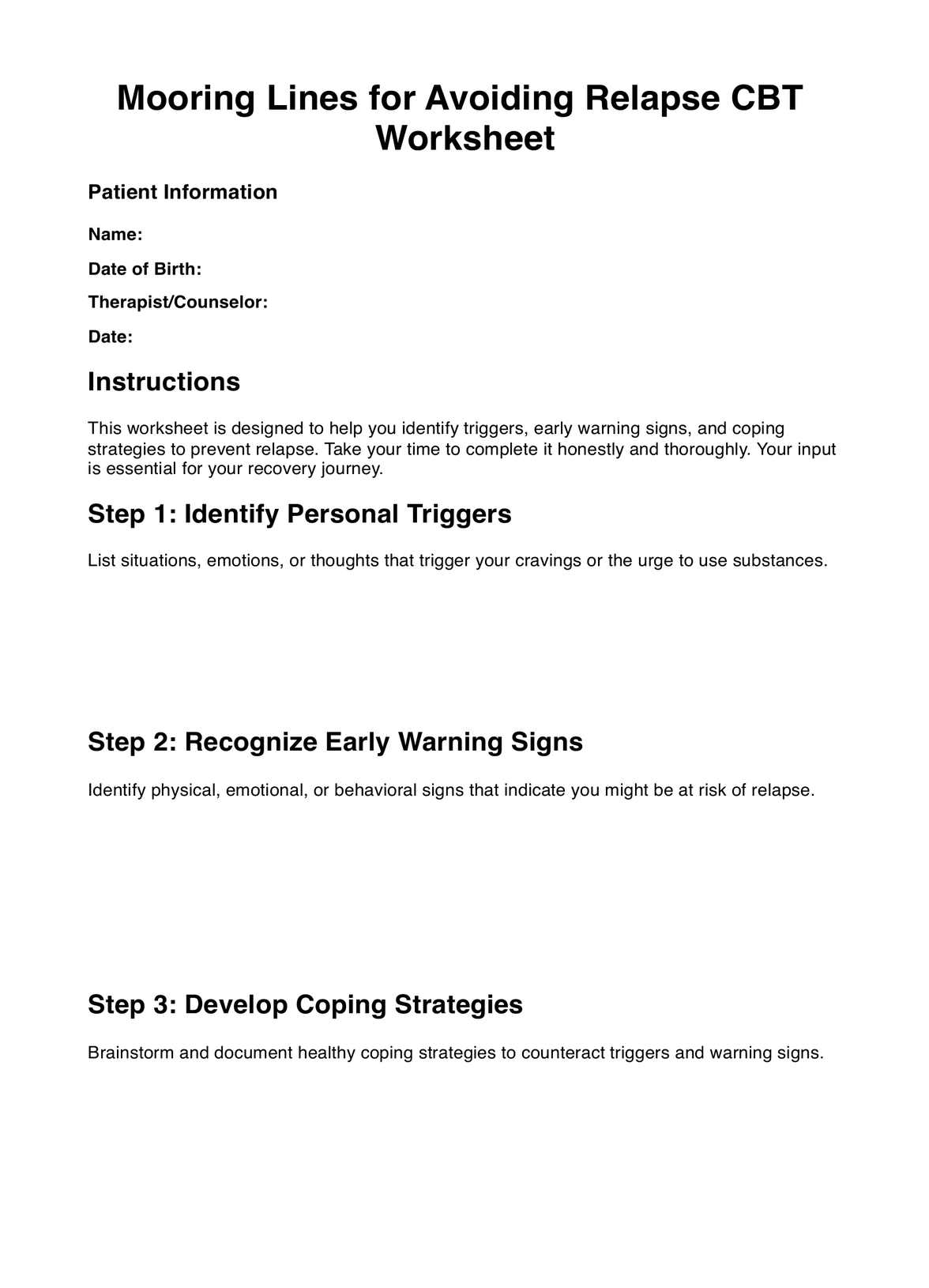The time it takes to complete the worksheet varies by individual. It may take 30 minutes to an hour on average, but investing the necessary time to personalize it effectively is essential.

Mooring Lines for Avoiding Relapse CBT Worksheets
Discover the benefits of the Mooring Lines for Avoiding Relapse CBT Worksheet for effective addiction recovery and relapse prevention.
Use Template
Mooring Lines for Avoiding Relapse CBT Worksheets Template
Commonly asked questions
The worksheet helps individuals in recovery by assisting them in identifying triggers, recognizing warning signs, and developing coping strategies to prevent relapse
It's best used early in addiction treatment, during relapse prevention planning, and throughout the recovery journey to maintain sobriety effectively.
EHR and practice management software
Get started for free
*No credit card required
Free
$0/usd
Unlimited clients
Telehealth
1GB of storage
Client portal text
Automated billing and online payments











